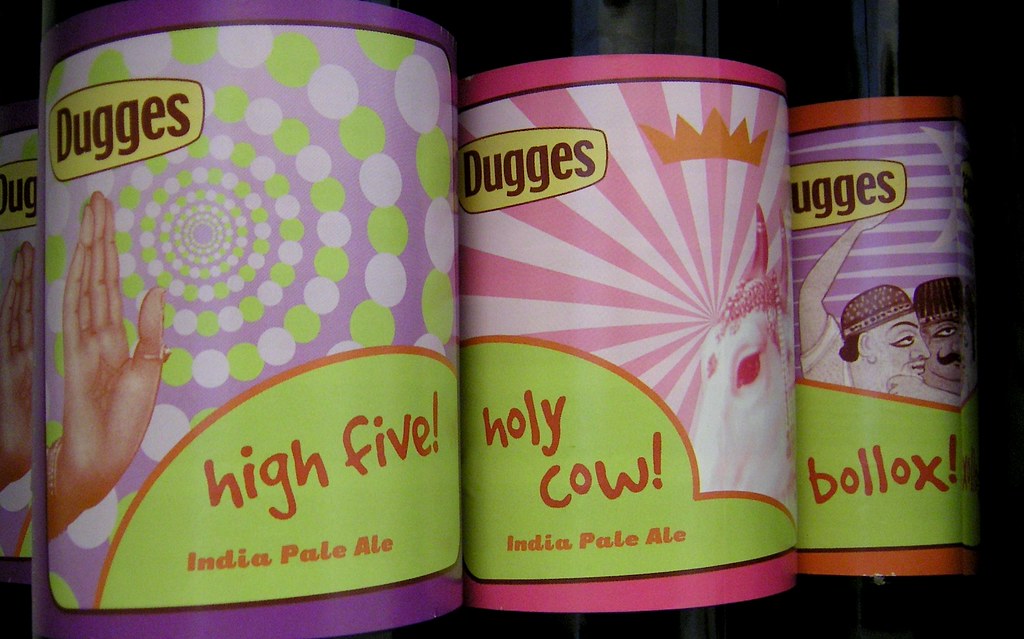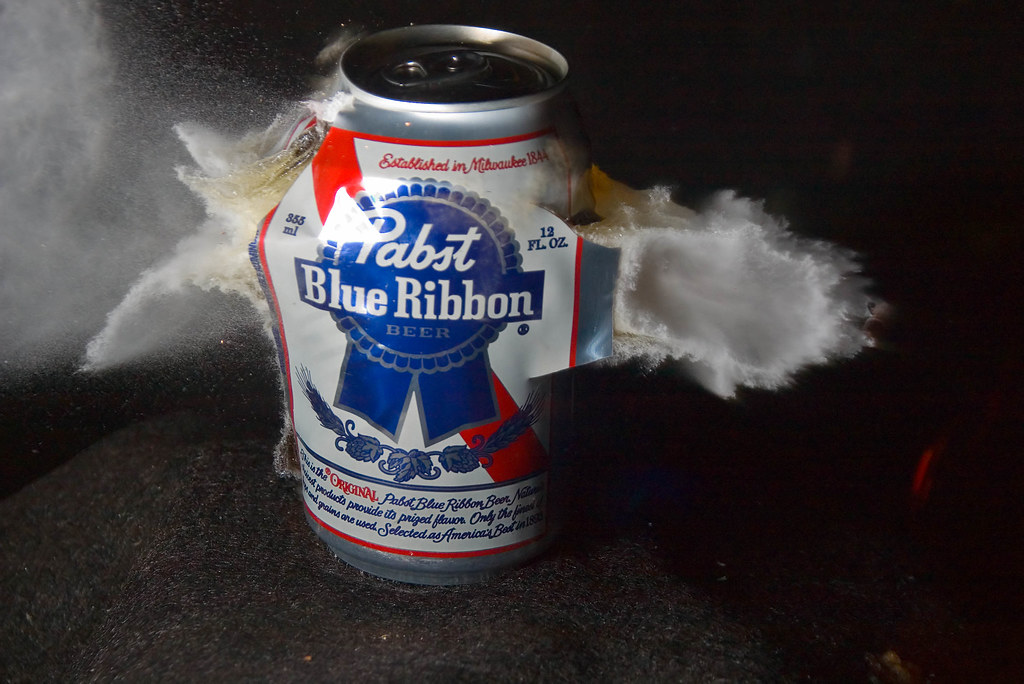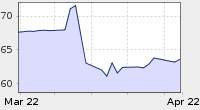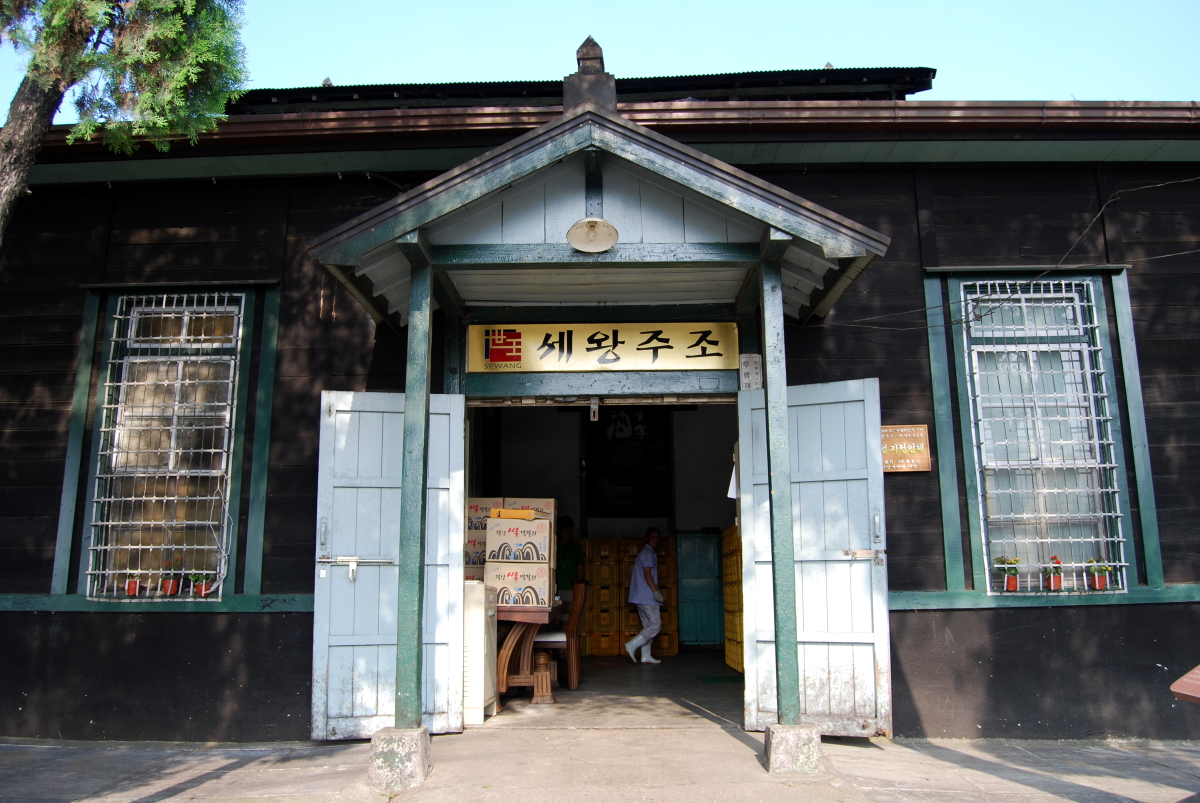
Photo by flickr user rojo2001.
 Not only do I not see the connection, but I see some overzealous regulator crying foul on "targeting children" as well!
Not only do I not see the connection, but I see some overzealous regulator crying foul on "targeting children" as well!Mr. Polley is among a small but rising number of newcomers to attempt to grow hops on a commercial scale outside the Pacific Northwest, America's haven for hops. One of the most obscure crops in a long line of agriculture commodities to enjoy a recent price boom, hops are sprouting in numerous other locales, from Colorado to Wisconsin to New York. The growers aim to capitalize on hop prices that are as much as sixfold higher than a few years ago, as well as the nation's boom in small-batch "craft" brewers, like Colorado's New Belgium Brewing Co. and Odell Brewing Co., which are thirsty for locally grown hops.The latest issue of BeerAdvocate magazine also has a feature on growing hops. My dad and I looked into it once, but apparently the climate in Florida (surprise!) isn't ideal.
At the University of Detroit Mercy, Lauren Wolfe, a 25-year-old superdelegate, set out cautiously with her clipboard to hit the bars to register Democrats to vote. Wayne County, which houses the university, has more than 1,400 businesses licensed to sell alcohol.Go to where the votes are, I suppose? Fortunately for the now-finalized McCain-Palin ticket, I suppose, turnout among my demographic is notoriously and perennially low. I'm sure Maureen Ogle could draw some comparisons to the old practices of buying rounds on election day?
"We were shocked by the amount of people that really responded," says Ms. Wolfe. "We had one guy who had just moved from New York and knew that his vote in New York didn't mean as much as it did in Michigan. He was like, 'I'm so glad that you guys are here because I probably never would have actually switched my registration.'"


Each establishment is surveyed officially twice throughout the year, but also receives up to four undercover visits from Cask Marque’s testers.
To retain an exclusive reputation the organisation is swift to act if a pub consistently falls below the required standard.
Annabel says: “The Cask Marque plaque remains our property.
“A landlord will be asked to remove it until our levels of quality have been reached.
Besides being an interesting job title, the story also provides an example of non-regulatory consumer protection. Without any government involvement, Cask Marque maintains quality standards through voluntary consent to inspections, in the hopes of drawing more business. Win-win, all around.

But then I guess a waterfall made of beer would be refreshing too, and slightly more probable.Sounds good to me! The post raises a legitimate question... would you rather have honest politicians, or a waterfall of beer?
Tickets range from around $4 (USD) to $20, and with the dirt cheap concessions (they sell beers for 70 cents!) this Olympics has turned into the biggest bargain entertainment I have ever experienced. So far I have seen, boxing, handball, soccer, basketball (no US), water polo, judo, beach volleyball (twice) and baseball (twice), drank heavily at most events and still probably haven't spent more than $100 USD. There is never going to be another Olympics this affordable ever…unless they decide to have it in Myanmar at some point.Chinese beer typically comes in glass bottles of around 600ml which can cost less than 70 cents, but I can't imagine glass at a sporting event, so these are probably concession cups.
When was beer replaced by wine as the usual beverage at Hall? Peter Linehan would be grateful for information bearing on the date of this crucial transition in the College's history. Answers on a postcard please to Dr Linehan, St John's College, Cambridge, CB2 1TP or by email to pal35 AT cam DOT ac DOT uk (obvious edit there...)The College of St John the Evangelist, the greatest of the colleges in my completely unbiased opinion, was founded in 1511, and sometime thereafter not only replaced beer with wine as the beverage supplied at formal halls, but as a porter informed me, prohibited beer from being taken into hall as well (what folly!). I haven't tested this prohibition, although I have brought homemade mead to a formal at Clare.
Sales of real ale have bucked beer’s downward trend. According to TNS, a market-research firm, the volume of real-ale sales has grown by 3% over the past year, whereas total beer sales were flat. Among all alcoholic drinks, only cider and wine performed better. Around 600 breweries now produce real ale, says Adrian Tierney-Jones, a journalist and beer expert. Their number has doubled in 15 years.What is the driving factor of this growth? The Economist offers several explanations:
Beer boosters argue that consumers prefer a higher-quality product...
Others point to the backlash against big business and globalisation that also fuels sales of organic food and locally-grown vegetables... Patriotism plays a part as well: one T-shirt at Earls Court flaunted a bulldog relieving himself on a European Union flag.
But perhaps the most likely explanation is that despite its folk origins, real ale is "mostly imbibed by the same rich or aspirational classes who helped to popularise (non-native) wine." It's this driving force which, in my opinion, will open up opportunities for craft brewers throughout the developing world as middle classes grow and their aspirational tastes become more sophisticated.
Minxia, a Maryland-based subsidiary of China’s MinMetals Corporation, $1.2m for dealing in Cuban metals. Gate Gourmet, a Swiss-American group, was ordered to pay $600,000 because it supplies in-flight meals to Cuba’s national airline...This may spell trouble for newly formed A-B InBev:
InBev, a Belgian-Brazilian brewer that recently bought America’s biggest beer maker, Anheuser-Busch, for $52 billion, has a joint-venture with Cuba’s government which claims 40% of the island’s beer market. As a director of a European company with a big investment on the island puts it, the best strategy is to “try to stay under the radar and make damned sure you are here when the United States’ government finally sees sense.”Good luck staying under the radar after being quoted in the Economist.

This is an old drink. Traditionally a 50-50 mix of stout (Guinness, almost invariably) and Champagne, it’s reported to have been created to honor the passing of England’s Prince Albert in 1861. “So it’s got that Old World feel,” Mr. Calvert said. “And we wanted something beer-based, which, in Brooklyn, seemed appropriate.” James veers from the standard recipe, however, by melding the Champagne with a Belgian ale, Leffe Brune, rather than a stout.
It’s a pleasing variation, with the ale’s malty sweetness — its flavor evoking the scorched top of a crème brûlée — bringing a new, lighter dimension to the old pub standard.
If James’s Black Velvet is any indication, beer and Champagne can coexist just fine. Especially, perhaps, in Brooklyn.
For reasons some readers will know, I'm a fan of sparkling wine as well as beer, and generally approve of champagne cocktails. I'll have to give this particular combination a try...
 e4tango, ftw!
e4tango, ftw! In addition to good harvests, is the air coming out of a commodity bubble?
In addition to good harvests, is the air coming out of a commodity bubble?
At the age of nineteen, way back in 1992, I purchased a beer in a Philadelphia bar...That should have been the end of it, or at least you'd think... What Megan didn't realize was that she had incurred the wrath of the Pennsylvania Department of Transportation:
While consuming my one (1) beer, I was apprehended by agents of the Pennsylvania Liquor Control Board. They called my parents, fined me, and made me attend a class on the horrors of underaged drinking (did you realize that drinking can lead to uncontrollable vomiting?)
I went to apply for a District of Columbia driver's license this morning, only to be informed that I cannot, because the Commonwealth of Pennsylvania wants to suspend my driver's license.Apparently Megan is not the only one to have been caught in this bureaucratic tiger trap. Admiral suggested I hold a "Dumb Beer Law Olympics" on this blog... I think this Pennsylvania horror story should qualify. Send in more and we'll vote for gold, silver and bronze.
The problem, you see, is that at the time of my conviction, I did not have a Commonwealth of Pennsylvania Driver's License. Indeed, I had no driver's license at all, being one of those benighted city people who get their first driver's license at the age of 23. The laws of the State of Pennsylvania, however, say that the Department of Transportation is entitled to suspend the driver's license of anyone arrested for underaged drinking. And the Commonwealth of Pennsylvania Department of Transportation is, apparently, determined to exercise this privilege.
First they came for Olympia, and I said nothing. Then they came for Old Style, and still I said nothing, because I live 1,000 miles away and Old Style sucks anyway. Then they came for Ballantine, and -- ooh, is that a micro-brewed hefeweizen?The quasi-retro regional beers included in the Pabst portfolio include Olympia, Ballantine, Stroh's, Schlitz, Old Style, Old Milwaukee, and Haffenreffer "P-Stock." As the company says on its website:
First slowly, and then boldly, with the 1999 purchase of Stroh's and its associated brands, Pabst sucked up many of the best-known old-school mediocre beers in America. If your dad liked a beer, and was on a budget, chances are that his swill-of-choice is now owned by Pabst.
Each of our brands follows time-honored, uncompromised brewing processes that are more than traditional – they’re legendary. Our brands are like family and hometown friends – a familiar part of your life, timeless and always true to character. With more than 25 different and distinct beers, you’re sure to discover a beer that is more than just a drink – it’s a part of your heritage. [emphasis added]
The strategy seems to be working for them so far.
Technically, he's not. Buckets ruled back before Prohibition, when 99.9% of beer was sold in kegs and at saloons. There wasn't really any way to "keep" beer at home.
So people either went to the saloon to drink, or they sent their kids there to grab a bucket of carry-out. (Or, people sent a co-worker, since most employers allowed people to drink beer during breaks.)
But when Prohibition ended in 1933, lawmakers created legislation designed to prevent that kind of easy drinking.
At the same time, however, bottled/canned beer became the norm and home refrigerator became commonplace. Bye-bye bucket.
BUT: old habits die hard. In the 1930s and 1940s, many people living in urban, working class neighborhoods still used the bucket for carryout. (Many did not yet have refrigeration and laws are always easier to evade in big cities.)
By the 1950s, the bucket, legal or otherwise, had gone by the wayside.
So, would John McCain remember buckets? Doubtful. He's too young! Now if he'd been born in 1906 . . .
Besides, he was born into the wrong "class." His kind of people definitely didn't do buckets.
Just more than a week after the Princeton Review cited UF as the best place to party, the university revised its alcohol policy, specifically prohibiting some popular college-drinking activities.Fortunately, very few students over 21 actually live on campus where these new rules could be enforced, a fact the university seems to recognize:
No more quarters, beer pong or other drinking games. No more keg stands, where students guzzle beer from a keg while being held upside down. Or alcohol ice luges, where liquor is consumed through a giant block of ice... No kegs, mini kegs or beer balls would be allowed at all under the revised policy...
The policy applies to students on-campus or off-campus, although Sikes said off-campus enforcement would be only in extreme casesStill, it will let the administration feel that they are "doing something" to stop the problem, even if no one expects it to have any effect whatsoever. UF's new president, Bernie Machen, launched something of a crusade against drinking when he first arrived, and his attitude does not appear to have changed. I was not a fan of Mr Machen before for plenty of other reasons, but I honestly struggle to find any (non-athletic) positive points in his presidency.
Mr Grimm's "journalistic instincts" and wit are just as impressive as Mr Machen's ability to run a university.My journalistic instincts tell me that ignorance here is a much more useful tool than knowing. Having no idea what beer pong actually entails, I could assume that its a kind of mating ritual popularized at the University of Florida in the 1960s by servicemen returning from Vietnam. That would explain the rumor that Charlie Crist employed beer pong in a desperate attempt ti entice his high society girlfiend into marriage.
Wikipedia says otherwise. Something about players tossing table tennis balls down a ping pong table and attempting to deposit the sphere in a glass of beer.
Say what you will about the healing properties of mud baths, saunas or lavender-scented candles, but soaking in a stainless-steel tub filled with Czech beer put my body and soul at ease.
I was in the brick-lined cellar of Prave Pivni Lazni (original beer spa), run by the Chodovar brewery in the tiny Czech town of Chodova Plana, and I was about to slip naked into the first tub I'd ever seen with taps for hot water, cold water and bathing beer.
Alone behind a curtain, I disrobed and stepped in, parting the beer foam that had settled on top of the heated blend of half Il-Sano mineral water and half dark lager. Warmed to 93 degrees Fahrenheit and mixed with curative herbs, confetti-sized bits of hops and yeast, this murky bathwater was far from thirst-quenching, which made the cold glass of lager resting on a nearby empty keg so welcome.
After stepping down from the pastorate last month after fifty years in ministry, Albert Finley did something no one expected: he had his first beer.
"I was curious what it actually tasted like, after all these years of preaching against it," he says.The good Reverend Finley tries a Sierra Nevada Pale Ale and finds himself hooked:
Finley says he relishes the flavor of hops and barley, and favors darker stouts and the more robust ales to the pale lagers. He always thought post-ministry life would be "sort of puttering around the house, praying for the world and so forth." But beer has changed his mind.
"I subscribe to a beer of the month club, so every week I have a new bottle in my fridge to try. Sometimes that’s my main reason for waking up," he says.Maybe his next sermon will include Jesus turning water into weizen?
 A slight departure from beer to share the Marmot's history and photographs of the Sewang Brewery in Cheongju, Korea. The brewery, which has been producing rice wine under the management of the same family for three generations, is a Registered Cultural Property by virtue of being Korea's last architecturally "old" brewery still standing:
A slight departure from beer to share the Marmot's history and photographs of the Sewang Brewery in Cheongju, Korea. The brewery, which has been producing rice wine under the management of the same family for three generations, is a Registered Cultural Property by virtue of being Korea's last architecturally "old" brewery still standing:Sewang Brewery was founded in 1929 by brewer Lee Jang-beom, and has changed remarkably little since then. The beautiful wooden brewery building, designed by a Japanese architect and constructed by Korean builders, was completed in 1930. Built of fir and cedar transported all the way from Mt. Baekdusan, the factory has managed to make it through the decades virtually in its original condition. It helps, of course, that it still does what it was purpose-built to do — produce high-quality takju (a.k.a makkeolli) and yakju using old-fashioned techniques handed down over three generations. This is very, very special place where architecture, history, cultural tradition, and the fine rice and water of Jincheon-gun blend into one.
This week is scribed in every beer lover’s calendar, as Earl’s Court in London hosts the Great British Beer Festival. There are five days to try more than 450 British and international beers, ciders and perries.I won't be attending, but if you are, give Melissa's article a look.
...here's the real question: Was the takeover basically financed by the savings Anheuser expected from escaping America's increasingly uncompetitive corporate tax system? According to the Tax Foundation, Belgium's corporate tax rate is 33%, but the effective tax rate can be half the nominal rate thanks to adjustments for something the OECD calls a "notional allowance for corporate equity." Bottom line: InBev was paying around 20% of its profits in corporate taxes, compared to Anheuser-Busch's rate of 38.4%... a research analysis by Morgan Stanley finds the combined company's corporate tax bill will be lower than in the U.S. and that the tax differential indeed figured into the economics of the sale.InBev did promise to make A-B more profitable... is this one of the ways in which they'll accomplish it?
 The pack includes:
The pack includes:In the 1970s, the family decided it wanted heftier returns on its dividends and handed the company over to a trio of bean counters.Douglas sent in a story from his local Gainesville Sun indicating that the brand may be poised to make a PBR-style comeback:
The bean counters slashed costs, and in the process, the beer went downhill. Fast.
After decades of dormancy, the beer is back.Apparently sales have picked up in Milwaukee recently, and market tests are underway elsewhere, but it remains to be seen whether Schlitz can capitalize on nostalgia the way PBR has.
Schlitz’ owner, Pabst Brewing Co., is recreating the old formula, using notes and interviews with old brew masters to concoct the pilsner again. The maker of another nostalgic favorite, Pabst Blue Ribbon, it hopes baby boomers will reach for the drink of their youth, otherwise known as “The Beer That Made Milwaukee Famous.”
"There’s still a lot of people who have very positive, residual memories about their experience. For many of them it was the first beer they drank and we wanted to give it back to those consumers.”
-She turned me into a newt!
-A newt?
-I got better...
Monty Python and the Holy Grail
After a shakeout in the mid 1990s, the nation's remaining 1,400 craft brewers have a stronger hold on shelf space and restaurant menus. Anheuser-Busch and Coors are making their own line of full-flavored beers. And the Brewers Association's book Start Your Own Brewery has sold more than 1,000 copies.The story also includes an interview with CEO of Deschutes Brewery, Gary Fish.
"A brewery in every town is not so crazy to think about in the future," she said. "It all goes back to the movement of consuming products that are locally produced.
"Who would have ever thought that Denver, Colo., would become the Napa Valley of beer?" she said. More than 60 breweries lie within in a 100-mile radius of Denver.